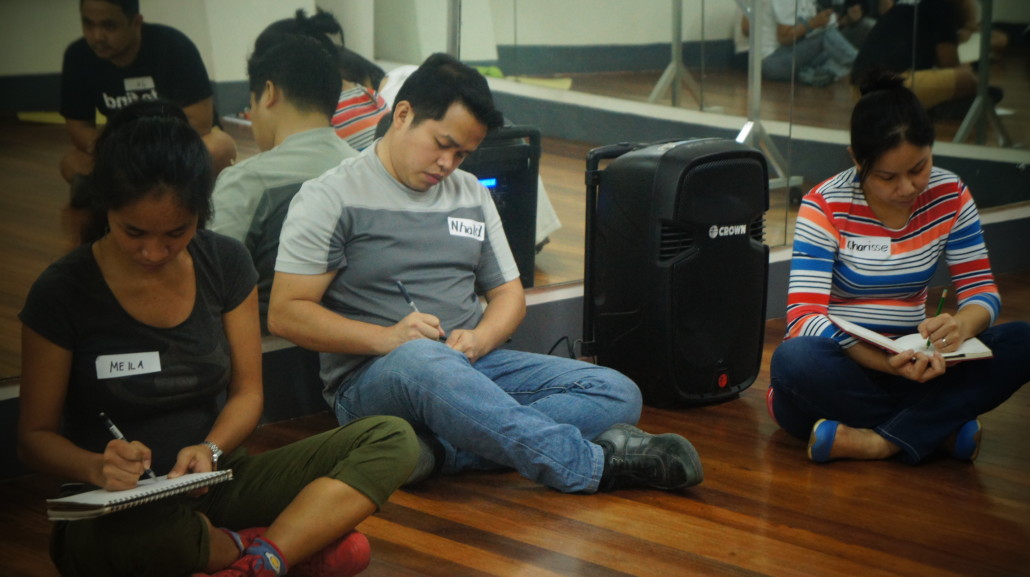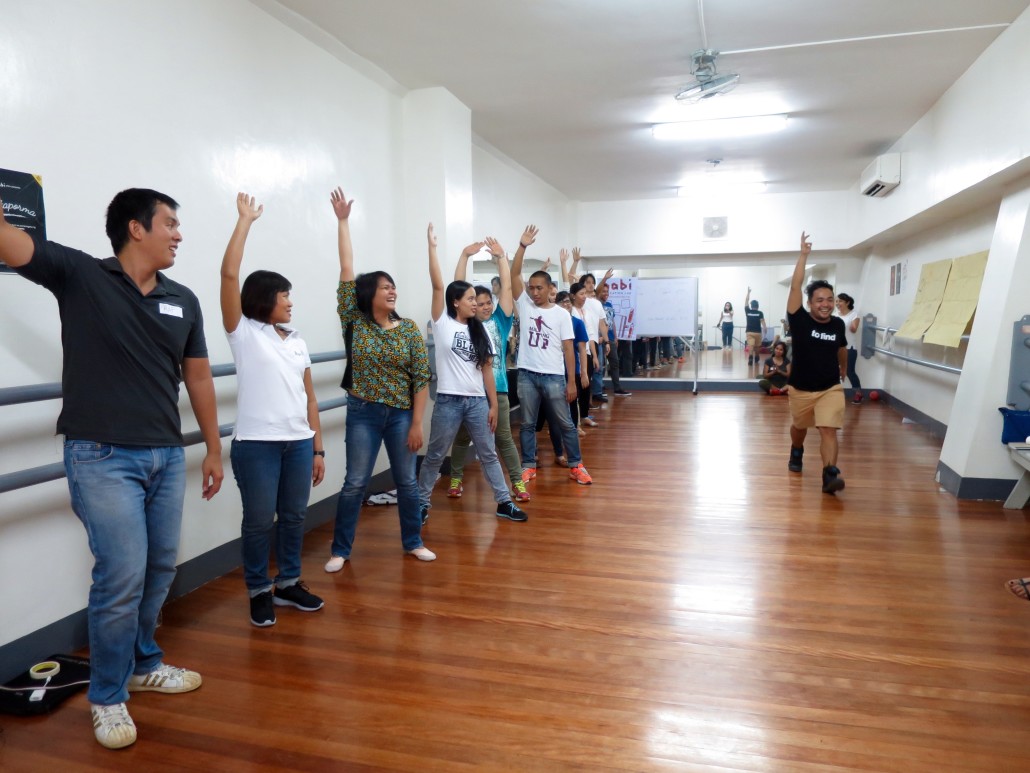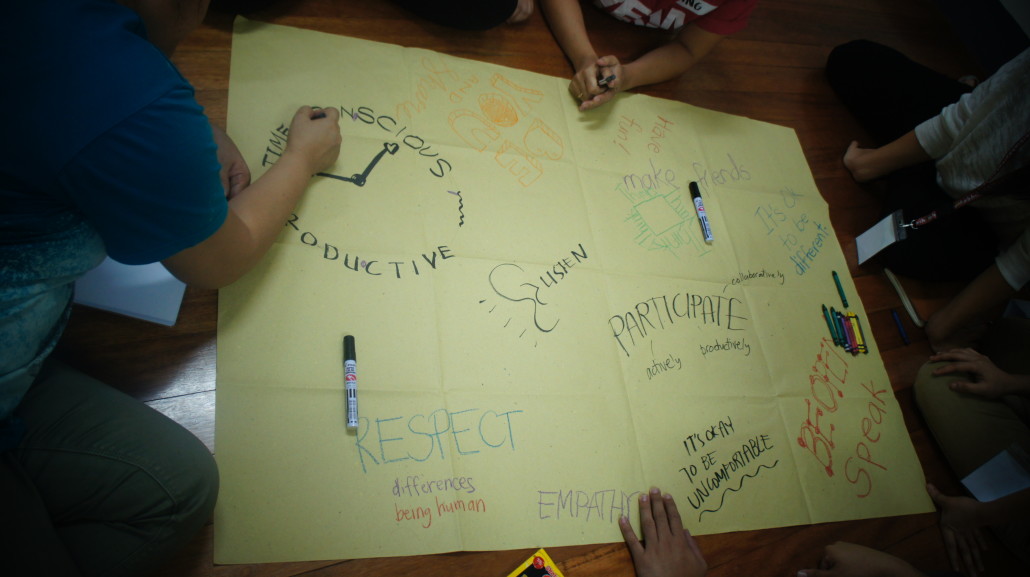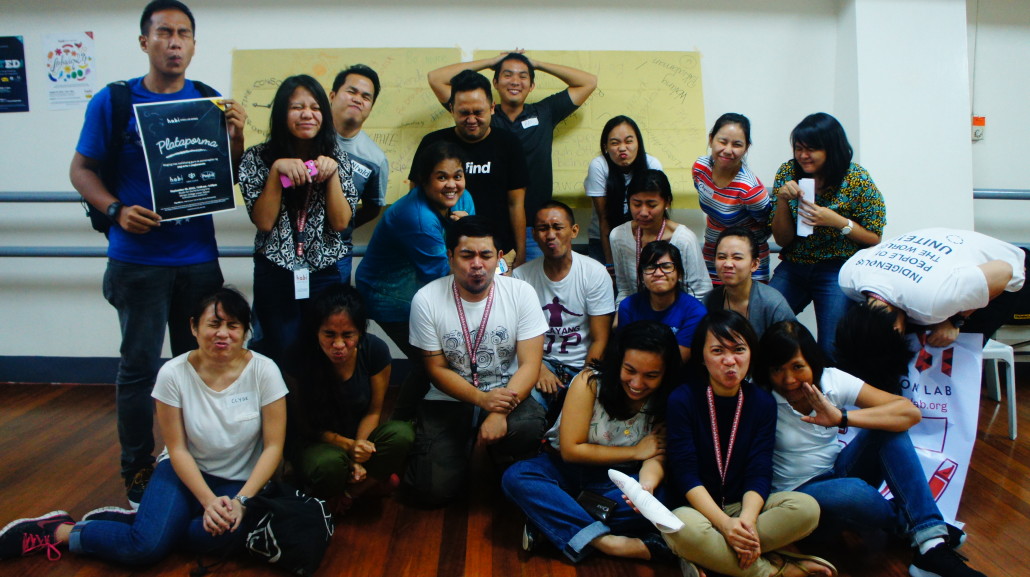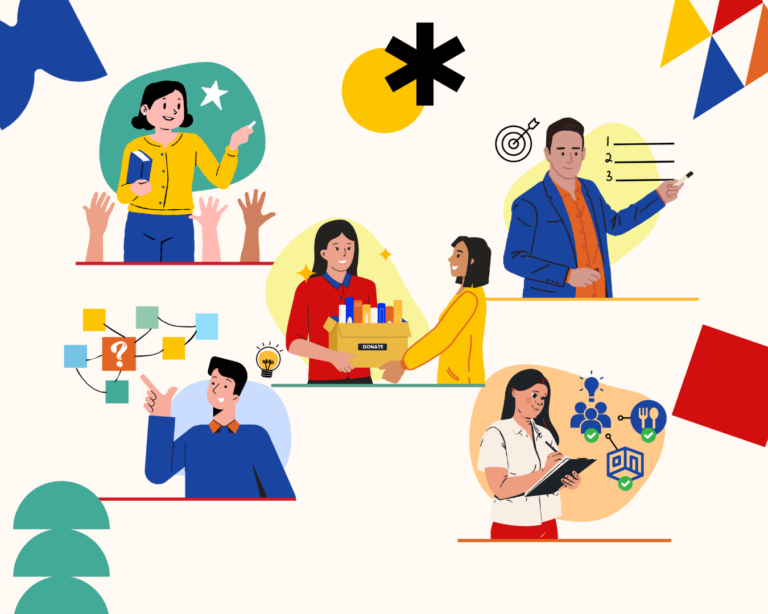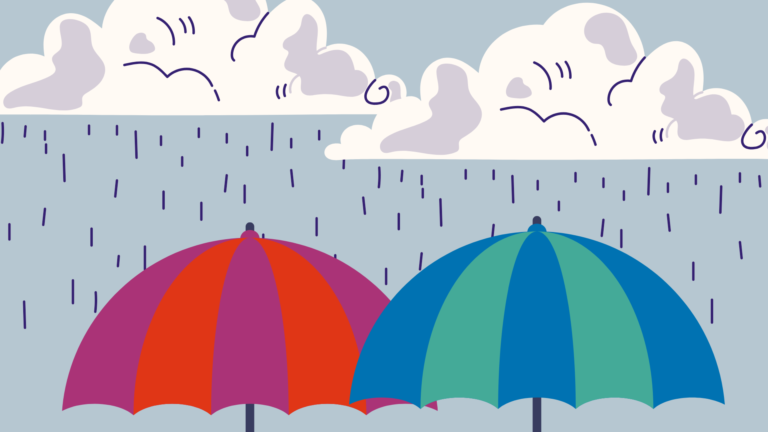“Dumating akong upos, uuwing nagliliyab.”
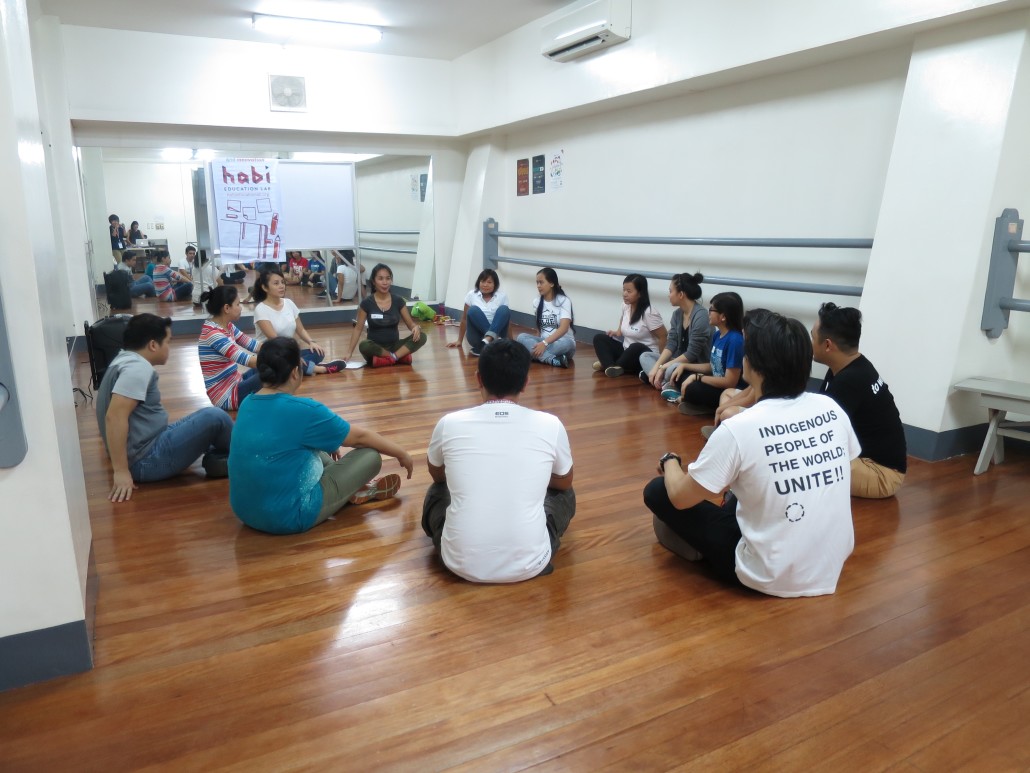
Establishing a sense of community through a group circle to officially begin the workshop. Plataporma, the 9th Habi Open Lab workshop, seeks to integrate concepts in performance with teaching practices. Studio for Performing Arts c/o Miriam College Lower School.
“Let’s begin by checking in”, facilitator Meila Romero-Payawal says as she smiles and gently taps on her belly. Around unfamiliar faces and a seemingly strange venue for an educational workshop (a ballet studio), the participants slowly eased into the group, forming a circle. She introduces herself and candidly speaks about her 4-month old baby bump as she checks in. This is a familiar way to begin meetings, workshops and classes, so I’m not surprised that the participants, mostly teachers, comfortably followed suit.
It was followed by activities that provoked physical and mental limits. An example- a modified volleyball game. As a team, we were instructed to stand up in a circle and keep the ball flying in the air by tossing it to each other without grabbing it. The ball must bounce off any participant and it must bounce around the group at least 10 times. The participants had a rough start, unable to reach three as our arms and legs flailed around. We restarted several times and eventually was able to complete the necessary number.
After that was an activity on spaces, a physical and surprisingly emotional activity revolved around locating our own safe and unsafe spaces. We were given time to slowly identify parts in the room where we felt both safe (and later, unsafe ones). After finding these spaces, Clyde Enriquez, another facilitator, began telling us to go further. “Challenge your will!”, she barked as she encouraged the participants to find other spaces that felt much safer (and later, unsafer). This activity turned out to be a favourite of several participants.
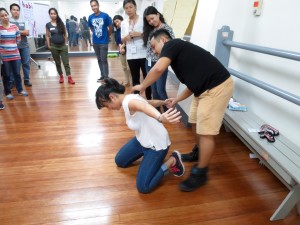
Facilitators JK and Clyde demonstrating an activity on sculpting humans
“Is safety a mindset or a belief system?” Clyde then mentions that as teachers, we may be passing our beliefs of fear onto our students, as we are share a space for learning with them. Our perceptions and intentions are important to understand, as these are precursors to our actions.
By this point, JK Anicoche, the third facilitator, comes to the forefront and introduces the overarching theme for the day. He writes the words “AWARENESS LEADS TO ACTION” on the whiteboard. He also includes the concept of spatial relationships, prompting the participants to be aware of spaces and how these can be used as an influential tool.
Action Points
While morning session was contemplative, the afternoon session was more physical as we were able to fully utilise our bodies and the space around us. Most activities were highly interactive. Each one was used to highlight aspects in performance and how it may enhance our teaching practices. The facilitators made sure that every activity was processed, which helped in making each activity a transformative learning experience for everyone.
As the day progressed, three main action points emerged:
- The need for self-awareness within spaces
- The significance of creating a shared platform that is conducive for learning
- Utilizing this platform to affect bigger systems
They exist in a continuous cycle. Without any one of them, the other two wouldn’t be as effective.
The need for self-awareness within spaces
Right from the start (including the check-in), activities in the morning were designed to prime participants to be reflective, setting the tone for self and spatial awareness. We were challenged as we moved around the room, finding ways to discover ourselves even further. We were pushed to be uncomfortable, even had one activity where other participants analysing our gait for a period of time. The facilitators were intentional about this, noting that vulnerability may be a way of pushing ourselves to be more self-aware.
As teachers, what are we to have to be aware of?
- Bodies – expansion, contraction, movement
- Voice – pitch, timber, modulation, depth, volume, texture
- Emotions – fear, safety
Can I share a space with my students, free from misguided assumptions and snap judgments?
Creating a shared platform conducive for learning
Once a sense of self-awareness has been established, we can now turn our attention to our work. A classroom is a shared platform between the teacher and students, and this holds much power to influence learning. The facilitators used an a shared manifesto to illustrate this point. The manifesto is to be filled up with a set of norms that are to be implemented throughout the day. Each person was given a chance to write on a shared piece of Manila paper. We ended up with a set of community-driven rules, where the participants had a sense of ownership as each was empowered to contribute. If we are to empower our students to claim ownership over the classroom, we may be able to establish a community where our students can thrive. “The classroom becomes an area to rehearse about life,” JK indicates. It is on the teachers to make the space ideal for the students to rehearse.
Aside from adjusting the way we view the classroom, what are other ways we can create a platform that is conducive for learning?
- Highlighting our positive experience (H.O.P.E.) – the importance of redirecting concepts and focusing on the positive
- Being mindful of our own assumptions when we create characters and content
- Understanding that our bodies are vessels to influence learning – the degrees of a teacher’s stance, gait, facial expression, voice have different effects on the students
Utilizing this platform to affect bigger systems
Sipat Lawin is well-known for its hard-hitting performances centered on social and political change. It is their mission to use performance to spark systemic change within communities. It is not surprising that the facilitators encouraged the participants to go beyond the classroom and seek to influence bigger systems. After all, if we view classroom teaching as a performance, then it may inspire action not only from students but from others as well. As we checked out, Meila left us with a challenge: “It is not who you are, but who you may become as teachers. Habang patuloy na kinikilala ang sarili at pagki-kuwestiyun ng kapasidad, paano kaya posibleng maibago pa ang ating pagtuturo?”
Mikey, one of the participants and a progressive school teacher, responded, “Dumating akong upos, uuwing nagliliyab.”
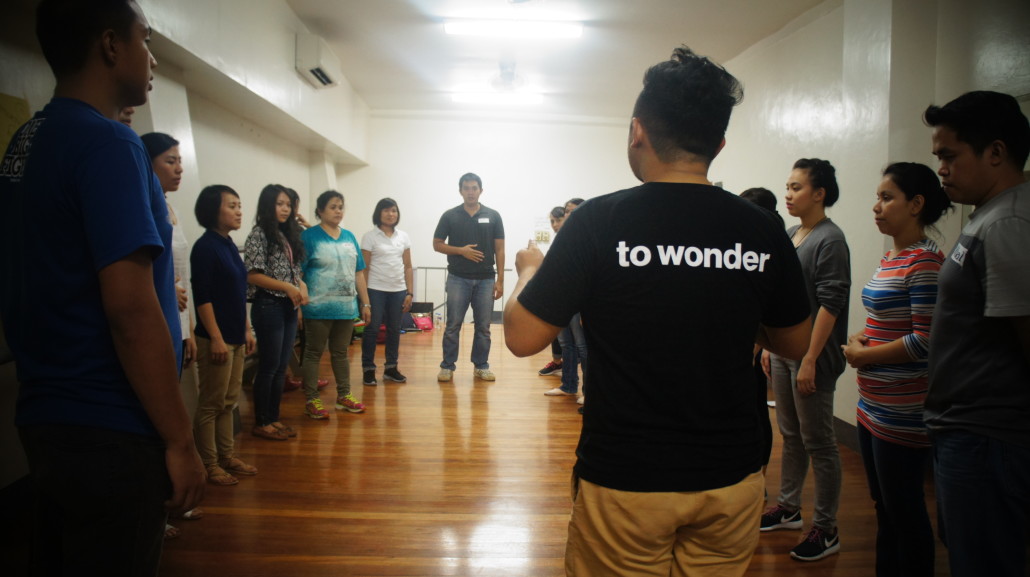
JK igniting fire among the participants

